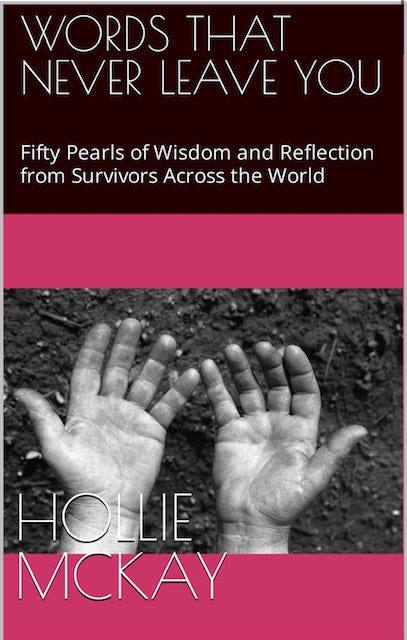Wait. Just how widespread is child sex trafficking in the United States?
The hidden horror right before our eyes
Did you know that almost 28 million individuals – mothers, daughters, fathers, sons, neighbors and friends – on the planet today are compelled into the labor or sex trade against their will? That is equivalent to the combined population of New York, New Jersey, Connecticut and Massachusetts. Did you know that roughly 65 percent of the victims of this black market-driven criminal enterprise are women propelled into sexual exploitation? And perhaps most chillingly, did you know that nearly 30 percent of all victims are children?
The trafficking of minors takes place behind the frail veneer of obscurity in every country and every major city across the globe – and the United States is no exception. Moreover, this criminal industry is only growing as the criminal industry functions to find the demand to meet the supply.
But what exactly is human trafficking?
According to the U.S. government, the $150 billion-a-year industry operates under two overarching umbrellas: forced labor and sex trafficking and is defined as a crime in which “traffickers exploit and profit at the expense of adults or children by compelling them to perform labor or engage in commercial sex.” The U.S. Department of State emphasizes that, regarding commercial sex acts, it is a crime when the victim is below the age of eighteen, irrespective of “whether there is any force, fraud or coercion involved.”
So, what specifically is child sex trafficking?
The U.S. Department of Justice refers to this horror as the “recruitment, harboring, transportation, provision, obtaining, patronizing, or soliciting of a minor for a commercial sex act.” The DOJ explains that offenders of this crime, who are commonly referred to as traffickers or pimps, “target vulnerable children and gain control over them using a variety of manipulative methods.”
Where is child trafficking the worst?
While the worst countries in the world for human trafficking, as per U.S. government reports, include Afghanistan, China, Cuba, Iran, North Korea, South Sudan and Venezuela, the United States doesn’t fare particularly well on the scale. In particular, the U.S. functions not only as a leading destination for victims but also as a prominent transit hub – including on the porous southern border. Nonetheless, studies indicate that 83 percent of all child trafficking victims on U.S. soil are American citizens. Today, there are more than 20,000 modern-day enslaved people under eighteen years old in the U.S., and the average age of these exploited children is just thirteen years old. Of this conservative estimate, eighty percent of these children are girls, and eighty percent of those girls are trafficked for sexual profiteering.
Cases of child human trafficking have subsequently been documented in all fifty states, and it is a crime that spans all races, classes, education and citizenship. But there are some cities worse than others. The worst of all? Washington D.C. Surprisingly, the nation’s capital – the leader of the free world and the base for federal law enforcement, the judiciary, and lawmakers – is the leading destination for predators to prey. But why?

While headlines rarely surface about trafficking in the District of Columbia, which further benefits the unscrupulous vultures, officials have growing concerns regarding the lack of preparedness. In 2017, local reporters exposed a human trafficking ring operated by two men allegedly selling underage girls for sex online – operating a few blocks from the White House and crossing state lines between D.C. Maryland and Virginia.
Sadly, this is just one of many rackets running rampant inside DMV neighborhoods; a murky and maddening underground component of D.C. life. Behind its ivory monuments and clean streets, the capital is also home to sizeable economic imbalances, further inflamed by racial inequalities, making the region an arable landscape for trafficking.
A 2018 analysis of trafficking statistics compiled by the District of Columbia Statistical Analysis Center surmised that the majority of human trafficking cases in the District involve sex trafficking, whereby victims are baited through an array of methods, primarily social media, and compelled into the commercial sex industry.
“In some cases, victims responded to ads in newspapers to work for massage parlors, but instead, they were coerced into performing sexual acts in addition to or in lieu of providing massage services,” the report claimed. “Traffickers may solicit prospective ‘buyers’ through residential brothels, on the streets, in strip clubs, or advertising online through websites.”
Further, most of those impacted are minors and, disproportionately, children of color. While anyone can be a victim of these heinous crimes, those under eighteen are especially susceptible to manipulation and misleading pledges to obtain dependency. Traffickers will often target those most vulnerable to slipping through social cracks, including runaway teens, homeless youth, immigrants, and domestic violence or social ostracization sufferers.
In the case of D.C., the city’s power structures, and flagrant economic discrepancies exacerbate the problem. In some cases, families themselves coerce minors into providing an additional stream of income, which lands them in a trafficker’s iron fist. Other times, foreign nationals bring victims into the area portrayed as tourists, making such circumstances challenging to detect and report.
Geography also plays a part. Given that D.C. is situated close to the trafficking hubs of New York and Maryland, traffickers can easily and quickly move victims from one place to the next. Terrifyingly, human trafficking is the fastest-growing and second-largest criminal enterprise on the planet – second only to the smuggling of drugs.
How prevalent is child trafficking in all of the United States?
In 2018, over half (51.6 percent) of the criminal human trafficking cases active in the U.S. were sex trafficking cases implicating just minors. It gets even more sickening. On average, a child is forcibly pushed into the U.S. sex market at 12 to 14 years old. The trafficker, in most cases, is someone the victim already knew, such as a relative, romantic interest, or friend. Children are often forced to have sex twenty times per day, six days a week, with predators charging around $90 per session.
Who is most at risk?
Although anybody can be a victim of this hideous crime, particular demographics are more susceptible to being taken advantage of via trafficking. Children comprise half of the victims of human trafficking on an international scale, with twelve as the average age of victims worldwide.
An estimated sixty to seventy percent emanate from the child welfare system, and a significant portion of child victims were already sexually abused as young children. Moreover, one in seven runaway minors are sex trafficking victims, around 15 percent are boys or non-binary youth, and the average life expectancy of a victim who isn’t in some way rescued or removed from the situation is seven to ten years from the time they first entered the illicit industry. Girls are often made to leave school, leading to a poverty cycle and trap of which many feel that they cannot escape.
And while labor trafficking receives far less attention than sex trafficking, it’s an issue that wreaks havoc on the feeble lives of tens of millions of children across the world every single day. According to the International Labor Organization, forced labor generated USD 150 billion in illegal profits annually.
How do predators prey?
Although incidences of trafficking mostly take place in hotels, motels, online websites and truck stops, much of the recruitment (roughly 65 percent) begins online, mainly through mobile applications and social media platforms. These also make it far easier for pimps and potential customers to connect anonymously, and financial applications like Zelle and Venmo enable the quiet exchange of funds and weed out law enforcement personnel.
Further, child traffickers still rely heavily on child pornography to line their pockets, and the internet is the primary means of distribution, with even “verified” mainstream sites such as Pornhub coming under recent fire for uploading videos of minors. After such a chilling reality came to light, the website suddenly deleted 80 percent of its content – a victory for advocacy and awareness.
In conclusion, the harsh reality of widespread child trafficking in the United States demands our urgent attention and collective action. As we unveil the depths of this crisis, it becomes clear that addressing the root causes, strengthening support systems, and enhancing law enforcement efforts are crucial steps in safeguarding the most vulnerable among us.
PLEASE CONSIDER A PAID SUBSCRIPTION TO THIS SUBSTACK TO HELP KEEP INDEPENDENT WRITING AND JOURNALISM ALIVE. THANK YOU SO MUCH FOR YOUR SUPPORT.
For speaking queries please contact meta@metaspeakers.org
Follow me on Instagram and Twitter for more updates
HOLLIE’S BOOKS (please leave a review)
** Short read of meaningful lessons gleaned from the ordinary forced to become extraordinary
Order your copy of “Afghanistan: The End of the US Footprint and the Rise of the Taliban Rule” out now.
For those interested in learning more about the aftermath of war, please pick up a copy of my book “Only Cry for the Living: Memos from Inside the ISIS Battlefield.”
If you want to support small businesses:





